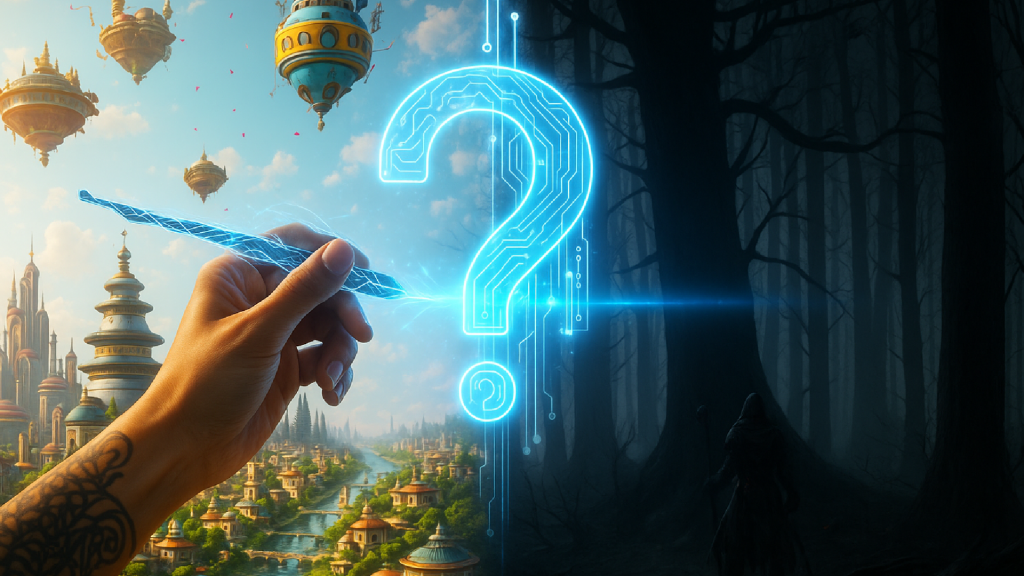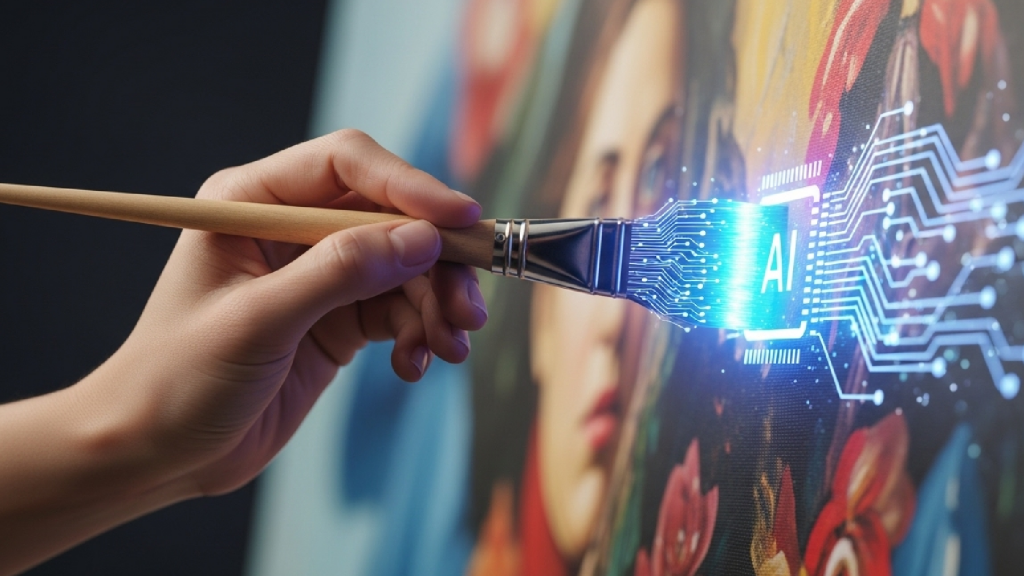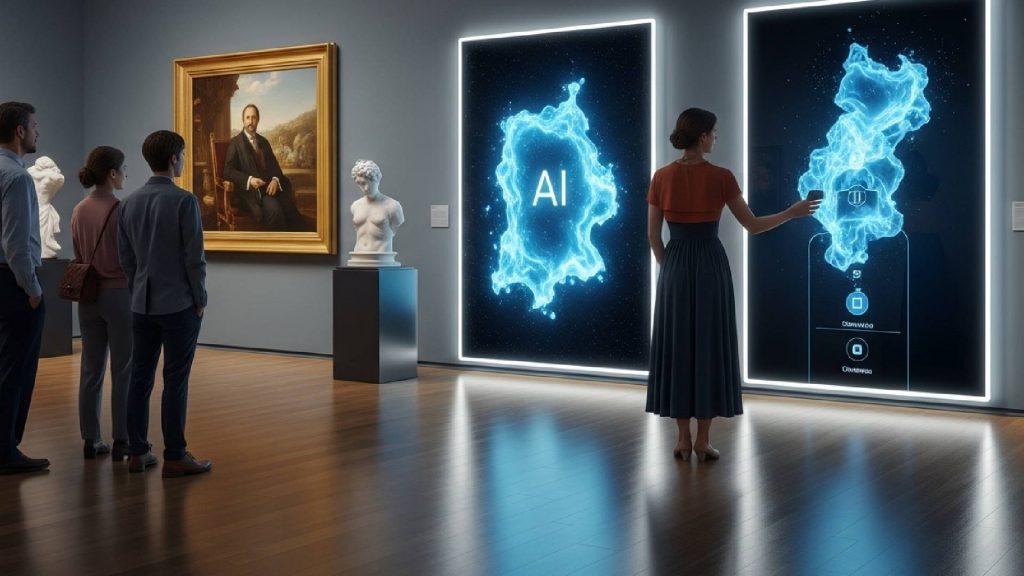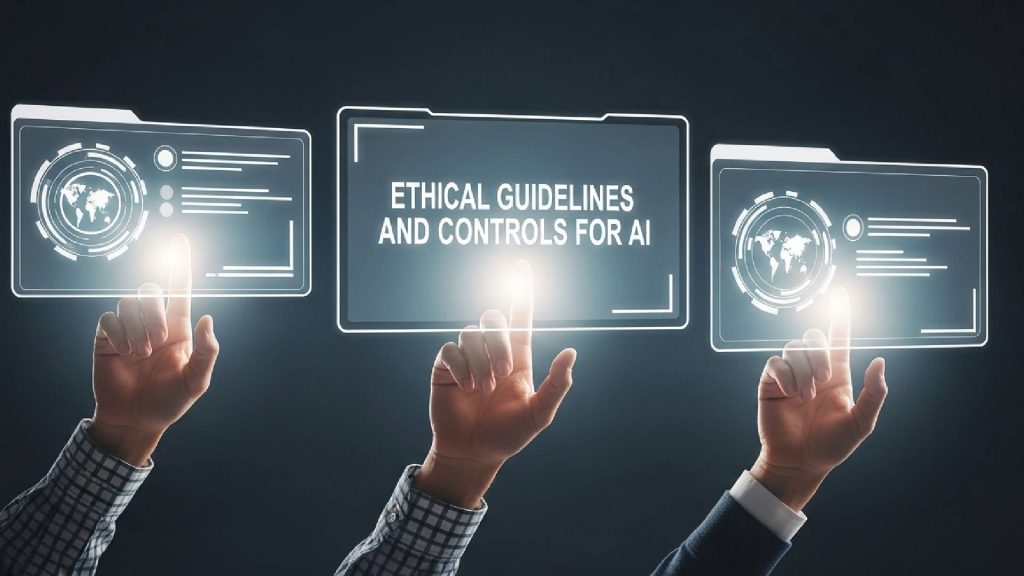AI and Creativity: A Double-Edged Brush?

The whispers have grown into a roar: Artificial Intelligence is here, and it’s fundamentally reshaping the world of human creativity. But is this powerful new force a boundless gift, offering unprecedented freedom and opportunity, or a creeping curse, threatening to devalue human artistry and displace countless creators? The answer, like most profound shifts throughout history, is almost certainly both. The truth, as always, lies in the nuanced interplay between innovation and human agency.
AI has certainly arrived as a revolutionary gift for the aspiring, the underdog, and the truly innovative. For the indie filmmaker with a grand vision but a shoestring budget, the bedroom musician yearning to share their unique sound, or the self-published author with a compelling story, the cost and skill barriers that once stood like insurmountable walls are rapidly crumbling. Imagine crafting realistic B-roll video of exotic locales you could never afford to visit, or generating complex visual effects that once demanded a Hollywood budget and a team of specialists. Picture an author refining their manuscript with an instant, unbiased AI editor, capable of identifying plot holes or inconsistencies faster than any human. Envision a game developer sketching out intricate assets, dialogue, and even basic code with an intelligent assistant. This burgeoning accessibility democratizes creation, empowering countless voices that might otherwise have remained unheard. It’s flushing out the latent creativity within individuals, allowing them to transform raw ideas into tangible art without needing years of traditional training or vast financial investment. AI, in this light, is a liberating medium, offering a new palette and a vastly expanded toolkit to anyone with a vision. It allows a flood of new perspectives into the creative mainstream, enriching the global tapestry of art and culture.

The Shadow of Displacement and the Soul of Authenticity
Yet, the anxiety stemming from AI’s rapid ascent is palpable, particularly within established creative industries. The recent tensions in Hollywood, with writers and actors rightly concerned about their work being replicated or replaced, are not isolated incidents; they are symptomatic of a broader apprehension. Musicians fear a future where algorithmic compositions flood the market, diminishing their royalties and devaluing the very notion of human authorship. How do you define originality when a machine can mimic any style or artist? The core of this fear isn’t just about job loss; it’s about the erosion of authenticity and the very soul of art. Can a machine, devoid of lived experience, emotion, and the messy complexities of the human condition, truly create something meaningful and resonant? This skepticism is deeply understandable, as it challenges our most deeply held beliefs about what it means to be an “artist” and the inherent value of human expression.
However, history offers a guiding hand. Each technological leap—from the camera challenging painting to synthesizers reshaping music, and even the advent of computer-generated imagery (CGI) in film—has faced similar resistance. Initially, these innovations were seen as threats, dismissed as artificial novelties. But they invariably led to new art forms, new jobs, and an expanded creative landscape. CGI, once criticized for its “uncanny valley” effect, is now an indispensable part of filmmaking, creating worlds and characters previously unimaginable. The rise of AI will undoubtedly displace some roles, especially those involving repetitive, formulaic, or highly data-driven tasks. But it simultaneously creates new opportunities: for “prompt engineers” who master the art of communicating nuanced creative intent to AI, for AI ethicists who ensure responsible development and fair compensation, and for discerning curators who can sift through the deluge of AI-generated content to find the truly exceptional. The key lies in adaptation. Those who learn to collaborate with AI, leveraging its speed and efficiency to enhance their unique human skills, will be the pioneers of tomorrow’s creative industries. Those who resist, clinging to outdated paradigms and refusing to engage with the new medium, risk being left behind in a rapidly accelerating landscape.

The Indispensable Human Element: Intent, Curation, and Imperfection
Ultimately, AI is a tool, albeit an incredibly sophisticated one. It functions by analyzing vast datasets of existing human creativity and generating new outputs based on those patterns. The magic doesn’t reside in the AI itself, but in the human intellect that guides it. It’s the human who provides the prompt, articulating the initial vision and intent. It’s the human who curates the best results from a multitude of AI-generated options, applying artistic judgment and taste. It’s the human who refines the imperfections, adding the subtle nuances and emotional depth that AI alone often misses. And crucially, it’s the human who imbues the final piece with meaning derived from personal experience, cultural context, and the desire to communicate something profound. An AI might generate a stunning visual, but it’s the human who chooses it, places it within a narrative, and uses it to evoke a specific feeling or tell a particular story. Without this crucial human input and oversight, AI-generated content can often feel sterile, predictable, or even uncanny—a sophisticated mimicry lacking genuine soul. It’s the inherent human touch—the unique perspective, the emotional resonance, the capacity for genuine surprise and empathy—that makes art truly powerful.
Think of an AI-generated educational video. The AI can synthesize a voice, generate realistic visuals, and even structure the information. But it’s a human educator who crafts the curriculum, understands the learning needs of their audience, and infuses the explanation with clarity, engaging pedagogical techniques, and the subtle cues that build rapport. Similarly, AI can churn out countless stock footage clips or generic musical themes, but a human director selects the perfect shot to convey a mood or advance a narrative, and a human composer weaves a melody that resonates deeply with an audience. The collaboration makes the product stronger: AI handles the heavy lifting, the technical execution, and the rapid iteration, while human intelligence provides the vision, the emotional depth, and the critical judgment that elevates a mere output to a work of art. The future is not about AI replacing humans, but about the synergistic power of human-AI collaboration, where our intuition and imagination are augmented by machine efficiency.

The Ethical Tightrope: Innovation’s Double Edge
This inherent imperfection in AI, much like human imperfection, is part of its charm and its limitation. It’s why human oversight remains paramount. Yet, the very same technology that allows independent filmmakers to create hyper-realistic virtual sets and detailed b-roll video in exotic locations they could never afford to go can also be wielded to produce chillingly convincing deepfakes and rapidly spread misinformation. The ethical tightrope is real and precarious: how do we harness AI’s immense potential for good—for personalized educational content, assistive technologies for those with disabilities, and groundbreaking new forms of artistic expression—while simultaneously safeguarding against its malicious applications? The chilling prospect of hyper-realistic fabricated videos, capable of spreading false narratives, swaying public opinion, and damaging reputations, demands urgent attention from policymakers, tech developers, and the public alike. Transparency about AI’s role in content creation and the development of robust detection methods will be crucial to maintaining trust in our digital world.
So, is AI a gift or a curse for human creativity? Perhaps it’s neither, or perhaps it’s both simultaneously. It’s a powerful new medium, much like paint on canvas or film in a camera—neutral in its essence, its impact defined entirely by how we choose to wield it. It offers an unprecedented opportunity to unleash creativity that was always within us, to amplify our voices, and to build new worlds that were previously unimaginable. The future of creativity won’t be defined by AI working alone, but by the dynamic, often messy, and always evolving collaboration between human ingenuity and artificial intelligence. The canvas is unfolding, and the human spirit remains the primary artist, now equipped with tools of unparalleled power.
How do you envision the human role in this unfolding creative future?
Share this content:
